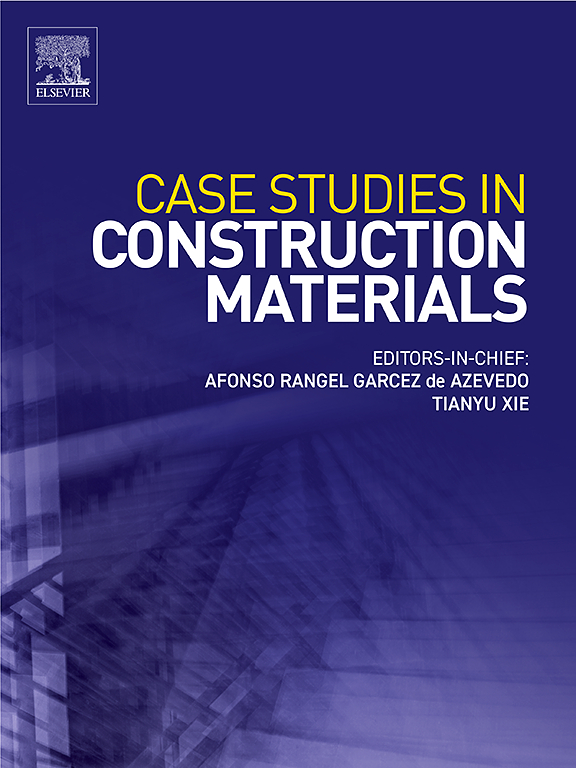Dynamic behavior and residual performance of CFDSTCs under coupled collision and blast loads
IF 6.5
2区 工程技术
Q1 CONSTRUCTION & BUILDING TECHNOLOGY
引用次数: 0
Abstract
Bridges can suffer partial or even total collapse when bridge piers, as crucial load-bearing bridge components, are hit by vehicles or ships. Concrete-filled double-skin steel tubular columns (CFDSTCs) offer high bearing capacity and good fire resistance, exhibit excellent mechanical properties under separate collision or blast load, and have broad application prospects in bridge structures. However, in extreme cases, CFDSTCs can be subjected to coupled collision and blast (CCB) loads, initiating coupling effects. In this study, the dynamic behavior and residual performance of CFDSTCs under CCB loads were investigated. First, the reliability of the numerical model was validated on the basis of existing experimental results. Second, the damage propagation process of CFDSTCs subjected to the separate collision and CCB loads was investigated, and the patterns of damage, deflection (D), and impact force (F) time histories were comparatively analyzed. The performance level of CFDSTCs after the CCB loads was determined based on the damage index thresholds. Finally, the primary determinants affecting the dynamic behavior and residual performance of CFDSTCs were investigated. The results showed that compared with the sum of the deflections under the separate collision and blast loads, the maximum deflection and residual deflection under CCB loads increased by 6.1 mm and 7.8 mm, respectively.
碰撞与爆炸耦合作用下CFDSTCs的动力特性与残余性能
桥墩是桥梁的重要承重部件,当桥墩被车辆或船只撞击时,桥梁可能会部分甚至全部倒塌。双皮钢管混凝土柱承载能力高,耐火性能好,在单独碰撞或爆炸荷载作用下表现出优异的力学性能,在桥梁结构中具有广阔的应用前景。然而,在极端情况下,CFDSTCs可能会受到碰撞和爆炸(CCB)耦合载荷的影响,从而引发耦合效应。本文研究了CFDSTCs在CCB荷载作用下的动力特性和剩余性能。首先,在已有实验结果的基础上,验证了数值模型的可靠性。其次,研究了CFDSTCs在单独碰撞载荷和CCB载荷作用下的损伤传播过程,对比分析了CFDSTCs的损伤、挠度(D)和冲击力(F)时程模式。基于损伤指标阈值确定CCB加载后CFDSTCs的性能水平。最后,分析了影响CFDSTCs动力性能和剩余性能的主要因素。结果表明:与单独碰撞和爆炸载荷作用下的挠度总和相比,CCB载荷作用下的最大挠度和残余挠度分别增加了6.1 mm和7.8 mm;
本文章由计算机程序翻译,如有差异,请以英文原文为准。
求助全文
约1分钟内获得全文
求助全文
来源期刊

Case Studies in Construction Materials
Multiple-
CiteScore
7.60
自引率
19.40%
发文量
842
审稿时长
63 days
期刊介绍:
Case Studies in Construction Materials provides a forum for the rapid publication of short, structured Case Studies on construction materials. In addition, the journal also publishes related Short Communications, Full length research article and Comprehensive review papers (by invitation).
The journal will provide an essential compendium of case studies for practicing engineers, designers, researchers and other practitioners who are interested in all aspects construction materials. The journal will publish new and novel case studies, but will also provide a forum for the publication of high quality descriptions of classic construction material problems and solutions.
 求助内容:
求助内容: 应助结果提醒方式:
应助结果提醒方式:


